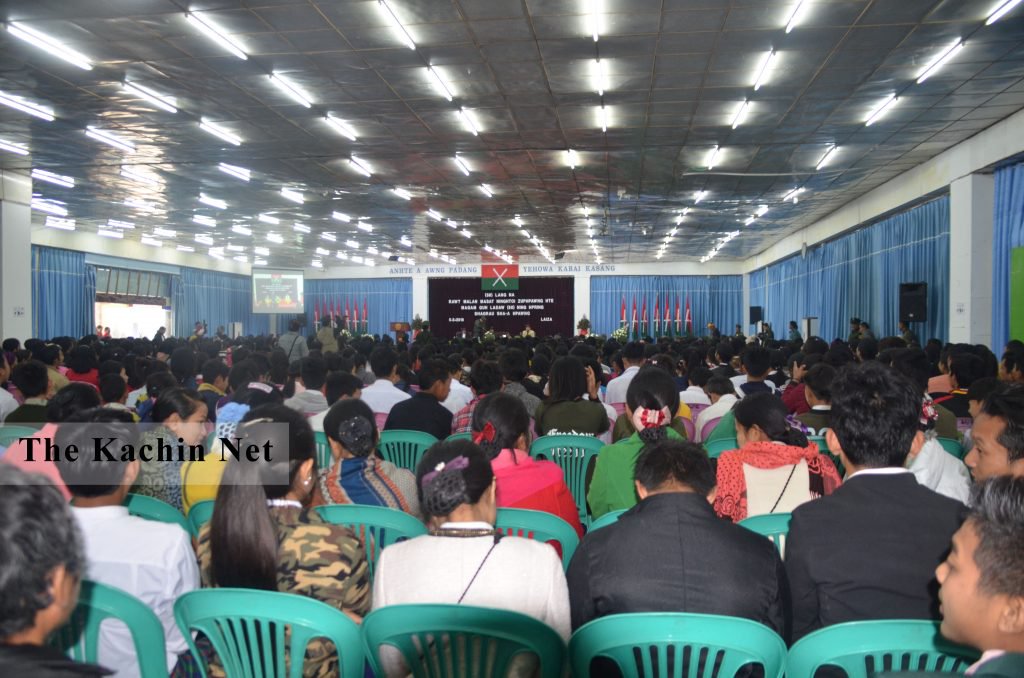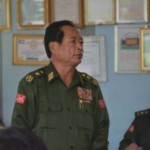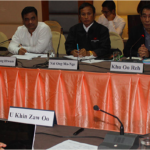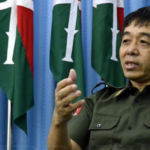Kachinland News | February 6, 2018
KIO/A personnel and Kachin civilians around the world commemorated the 57th anniversary of the Kachin revolution day on Feb 5.
In Laiza’s Padang hall, the KIO chairman General Nban La presented awards to honour KIO/KIA personnel who have served the organization for 10, 20, 30, 40 and 50 years.
General Nban La said in a message Kachin revolution did not begin with trust in firearms but with the support of ordinary Kachin civilians and it sustained the revolution spirit over 57 years. “a peaceful country can be established only when the Panglong agreement comes to life, justice and equality are honoured for ethnic nationalities and a genuine federal union is formed,” said Gen Nban La. He said it is important to be mindful of the situation after the 21st Panglong conference that the 1947 agreement will be null and void.
General Nban La asked the Burmese military not to attack the KIA as if it were a foreign invasion. He also urged the Burmese government and its military not to discriminate any ethnic armed group and political party.
Similarly, ceremonies to commemorate the revolution day were held at various cities in Kachin and Shan states, and major cities around the world honoring those who have fallen and reading the message from the KIO chairman.
Just months after Burma gained independence from the British colony in January 1948, several ethnic nationalities revolted against the government led by Bamar majority.
Kachin revolution first took shape in February of 1949 when Pawngyawng National Defence Force (PNDF) led by Lahpai Naw Seng was established to revolt against Burmese government. Lahpai Naw Seng and about 600 Kachin soldiers left Kachin region and crossed into China after several clashes with Kachins who were loyal to then Burmese government led by Anti-Fascist People’s Freedom League (AFPFL) in April of 1950.
One of Naw Seng’s commander, Lahtaw Zau Seng, who later became the first leader of the KIO/KIA was left in Shan state when Naw Seng’s troops crossed into China due to an illness and later joined Karen National Defense Organization with his soldiers.
In the 1950s, the years leading up to the Kachin revolution began as the then Burmese government led by leaders of Anti-Fascist People’s Freedom League ignored Panglong promises and asserted the Union in their own terms, repressing ethnic groups, and their cultural and religious traditions.
Kachin students from Rangoon University and Mandalay University were first to recognize injustice and inequality among Burma’s ethnic nationalities. Kachin university students regularly met to discuss Kachin political affairs. The students felt that Burmese government and Bamar majority treated Kachin as an inferior race and colonized Kachin region. A Kachin student group, 7 stars group, which comprised of 7 founding members, was founded in the late 1957 to lay groundwork for future Kachin Independence Organization and the Kachin Independence Army.
U Nu’s notorious racial project to burmanize the whole country, to transfer Kachin territories such as U-di U-ga and Laisai Ga to lower Burma and Hpi Maw, Gaw Lang, and Kang Hpang to China, and to make Buddhism as a state religion further fueled the growing inequalities felt by the Kachins.
Kachin Independence Organization (KIO) was formed in Lashio in northern Shan State on October 25, 1960 followed by the Kachin Independence Council (KIC) on Jan 15. After forming political organization, its armed wing, the Kachin Independence Army (KIA) was established at Hu Dawng village in Hsenwi (Thein Ni) on Feb 5, 1961, marking the beginning of Kachin armed revolution.
This article originally appeared on Kachinland News on February 6, 2018.







